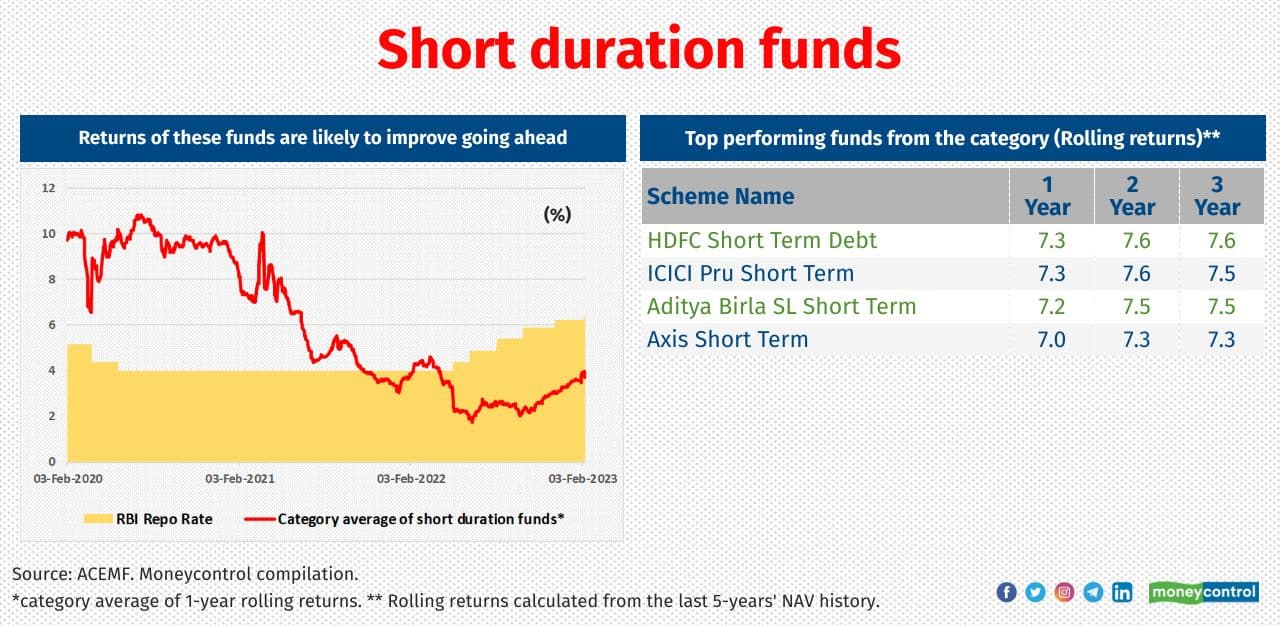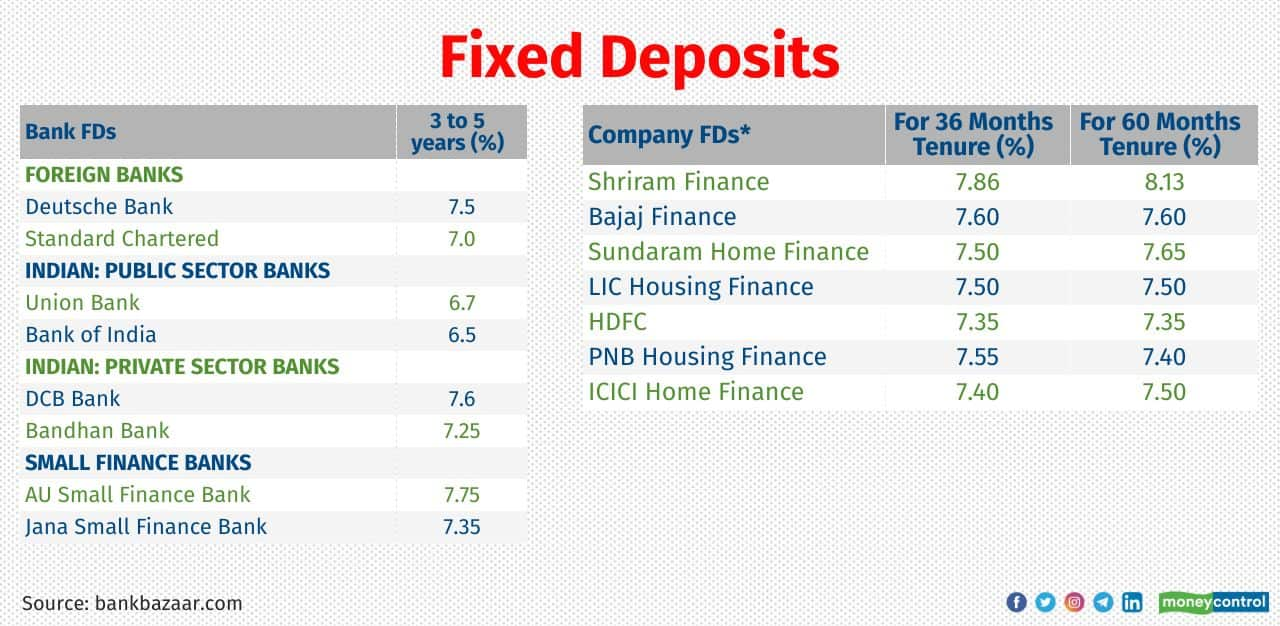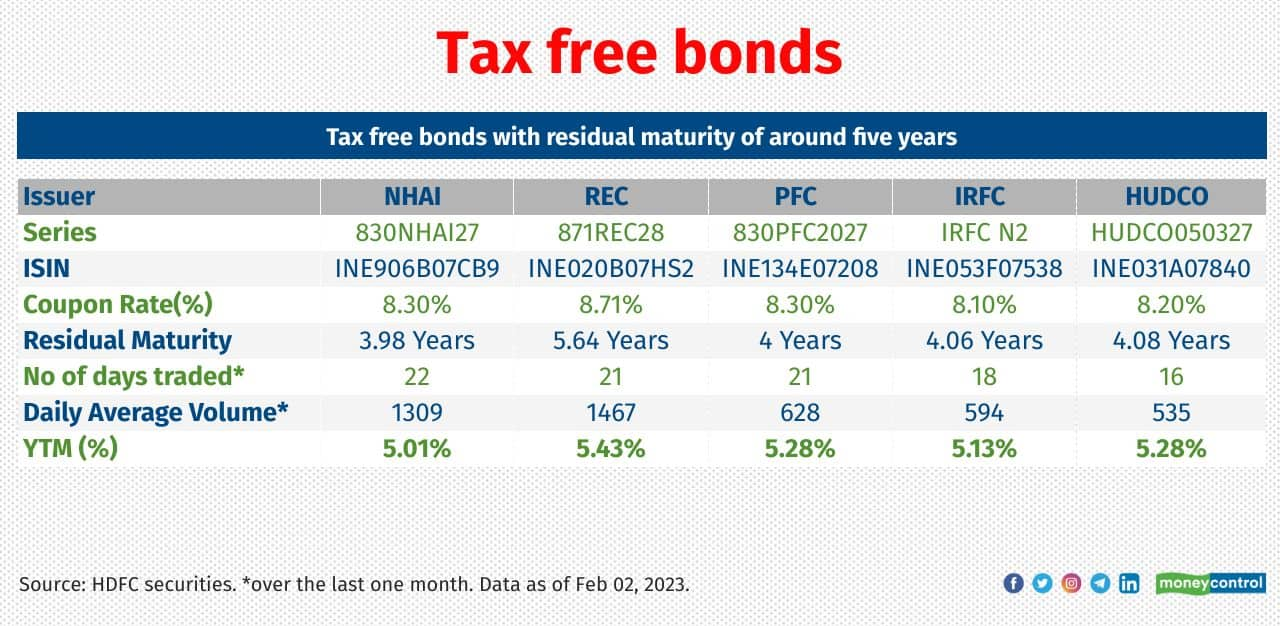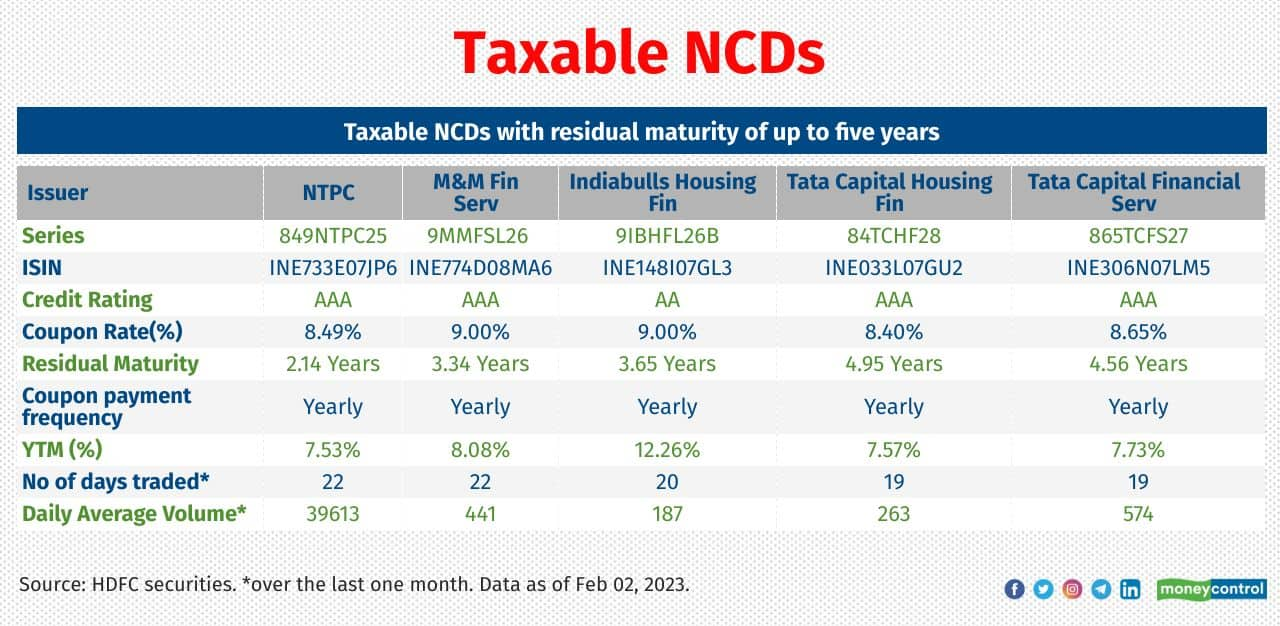
2/8
Over the last one year, the yields at the short end of the yield curve rose significantly thanks to consecutive rate hikes and tight liquidity in the banking system. Iyer is of the opinion that the nature of the yield curve remains flat and hence risk reward seems tilted towards the middle part of the yield curve – 2027-2030 segment. Here we list out the attractive debt option within the 3-5 years segment.

3/8
Short duration funds (SDFs) are debt mutual fund schemes investing mostly in bonds with a short to medium maturity. SDFs invest in bonds with a Macaulay Duration of 1 to 3 years. Bonds with short maturity are relatively less sensitive to interest rate movements than those with long maturity. SDFs are the preferred choice in a rising and higher rate environment as the proceeds of the short maturity papers can be redeployed in bonds with higher yields. This should improve the fund’s performance. Consider investing in these if you have a minimum three-year view, to take home tax efficient returns.

4/8
Investors keen on visibility of the returns expected from debt funds and defined time frame in mind may find target maturity funds (TMFs) attractive. TMFs are passively managed debt mutual funds (either exchange traded funds or index funds) tracking fixed-income indices. TMFs have a predetermined maturity date and hold debt securities that are constituents of the underlying index. These indices typically comprise government securities, state development loans (SDL) or/and high-quality bonds issued by public sector enterprises. Now, TMFs of 3+ years maturities are yielding around 7.5%. This provides attractive investment opportunity for investors with at least three years of investment horizon.

5/8
Conservative investors have been investing in fixed deposits issued by banks and companies. The FD market now gives a lot more options as there are now small finance banks and new-age banks with their own FD products. The assured returns appeal makes many opt for FDs. After the hike in policy interest rates by the RBI, banks and non-banking finance companies have announced an increase in interest rates on offer. Do not invest in FDs with very high interest rates as this is also an indication of high credit risk.

6/8
Tax-free bonds were issued by state-run infrastructure finance companies in the period between FY12 and FY16. These bonds were listed on the bourses and are now traded in the cash segment of the BSE and NSE. Investors can buy these bonds — through their demat accounts — from the secondary market. These bonds pay interest annually, which is tax-free. These bonds have been preferred the most by the large investors for short term. With 5.3 percent YTM, tax-free bonds are still an attractive buy for investors in higher income-tax slabs. For those in the 39 percent tax slab, that results in a pre-tax yield of 8.7 percent. Select bonds with higher liquidity and higher YTM in the secondary market that match your time horizon.

7/8
Non-convertible Debentures (NCDs) are fixed income instruments issued by corporates to raise long-term funds through public issues. They are issued for a specific tenure of, say, one to seven years and pay interest periodically or at the end of maturity. Many NCDs that were issued to retail investors (whose face value is mostly Rs 1,000) are listed on the exchanges and traded like equity shares. A few of them are traded with reasonable liquidity and near fair value. Investors with a medium risk profile, looking for options other than bank and corporate FDs, may consider buying these NCDs. Vishal Goenka, Co-Founder IndiaBonds says, “everyone is familiar with the benefits of a well-diversified portfolio and addition of taxable NCDs aids in portfolio diversification. Aside from the predictable cashflows, Taxable NCDs also offer protection against the volatility of equity markets”. Note that these NCDs are prone to credit and interest-rate risks. So, one should consider NCDs with a higher rating, better Yield-to-maturity (YTM) and ample liquidity on the exchanges.

8/8
Government securities (g-secs) are debt instruments issued by the RBI on behalf of the Central Government. State governments also raise money by issuing such instruments, which are called State Development Loans. Treasury bills (T-Bills) are short-term instruments with a maturity of 3, 6 and 12 months, while dated g-secs have a maturity period of 1 to 40 years. Since the Government of India backs these bonds, they are virtually credit-risk-free investments. However, these bonds are exposed to interest rate risks, which can be avoided if held till maturity. Retail investors can buy these bonds either offline or online. Retail investors can buy g-secs at primary issuance using RBI’s Retail Direct platform, that is, when a bond is first issued by the government. Or, they can participate in the secondary market, which is called the NDS OM (Negotiated Dealing System Order Matching). The other ways to invest directly in g-secs is through a trading and Demat account, which can be opened at any bank or NBFC in India. Retail investors can buy government bonds from stockbrokers and place bids online on the goBID web portal or the NSE goBID mobile application. In an auction held on February 10, 2023, the RBI has set the yields for the 2-year maturity paper at 7.14%. The remaining two auctions for this financial year will be held on Feb 17, 2023 and Feb 24, 2023 respectively. The RBI is likely to announce the indicative calendar for issuance of Government dated securities for the first half of the FY2023-24 anytime soon. Investors can also consider gilt mutual fund schemes, which are a more convenient and tax efficient way to invest in g-secs.
Used here for educational purposes only.

No comments:
Post a Comment